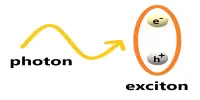Researchers from the University of Exeter Centre for Graphene Science, the Helmholtz-Zentrum Dresden-Rossendorf (HZDR), the Catalan Institute of Nanoscience and Nanotechnology (ICN2), and TU Eindhoven conducted a study and presented their findings in Nano Letters. The study shows that graphene-based materials can be used to effectively convert high-frequency signals into visible light and that this mechanism is ultrafast and tunable.
These findings pave the way for intriguing uses of information and communication technologies in the not too distant future.
Diverse technologies, particularly in telecommunications, where data processed by electronic equipment is frequently sent as optical signals through glass fibers, depend on the capacity to transform signals from one frequency regime to another.
Future 6G wireless communication systems will need to increase the carrier frequency over 100 gigahertz up to the terahertz range in order to enable noticeably faster data transmission rates. In the electromagnetic spectrum, between microwaves and infrared light, are terahertz waves.
We ascribe the light frequency conversion in graphene to a terahertz-induced thermal radiation mechanism, that is, the charge carriers absorb electromagnetic energy from the incident terahertz field. The absorbed energy rapidly distributes in the material, leading to carrier heating; and finally this leads to emission of photons in the visible spectrum, quite like light emitted by any heated object.
Professor Klaas-Jan Tielrooij
Terahertz waves, however, can only be used to transmit data wirelessly over a very small area.
“Therefore, a fast and controllable mechanism to convert terahertz waves into visible or infrared light will be required, which can be transported via optical fibers. Imaging and sensing technologies could also benefit from such a mechanism,” says Dr. Igor Ilyakov of the Institute of Radiation Physics at HZDR.
A substance that can increase photon energy by a factor of roughly 1000 is still lacking. The team has just lately discovered the strong nonlinear response of so-called Dirac quantum materials to terahertz light pulses, including graphene and topological insulators.
“This manifests in the highly efficient generation of high harmonics, that is, light with a multiple of the original laser frequency. These harmonics are still within the terahertz range, however, there were also first observations of visible light emission from graphene upon infrared and terahertz excitation,” recalls Dr. Sergey Kovalev of the Institute of Radiation Physics at HZDR. “Until now, this effect has been extremely inefficient, and the underlying physical mechanism unknown.”
The mechanism behind it
The new findings offer a physical justification for this mechanism and demonstrate how highly doped graphene or a grating-graphene metamaterial, a material with a custom structure exhibiting unique optical, electrical, or magnetic properties, can significantly increase the light emission. The scientists also discovered that electrostatic gating may be used to control the conversion, which happens on a time scale of less than a nanosecond.
“We ascribe the light frequency conversion in graphene to a terahertz-induced thermal radiation mechanism, that is, the charge carriers absorb electromagnetic energy from the incident terahertz field. The absorbed energy rapidly distributes in the material, leading to carrier heating; and finally this leads to emission of photons in the visible spectrum, quite like light emitted by any heated object,” explains Prof. Klaas-Jan Tielrooij of ICN2’s Ultrafast Dynamics in Nanoscale Systems group and Eindhoven University of Technology.
The terahertz-to-visible light conversion developed in graphene-based materials has excellent promise for use in information and communication technology due to its tunability and speed. Terahertz-to-telecom interconnects and any other technology requiring ultrafast frequency conversion of signals could be impacted by the underlying ultrafast thermodynamic mechanism.
















